Absolute Architecture in Paris
Over Easter weekend I made a trip to Paris. I had planned to do this for a while, since I thought that a regular weekend would not be enough time to fully enjoy the city.
Getting there was a bit difficult. When I was booking the train tickets, there were no more tickets available for a direct route from Cologne to Paris, it seems like everyone else in the world had decided to go to Paris Easter weekend as well. Instead I had to ride down to Karlsruhe, then take the train there to Paris. This meant that I had to rely on Deutsche Bahn being on time, which is never a good thing.
For probably the first time on my trip here, the train was actually on time, and I did catch my train to Paris. The first thing I did there was go to Les Invalides. The building houses a fantastic museum about the history of the French military, going all the way from medieval times to the modern day. What I really wanted to see though was Napoleon’s Tomb. The design behind it is really interesting. I remember my history teacher saying that it is purposefully designed to not be at eye level so that you are either bowing down to, or looking up at, Napoleon. I thought that was a really interesting design choice, and it is true. The tomb is also enormous, much bigger than Napoleon himself (although that’s not a very tall bar).
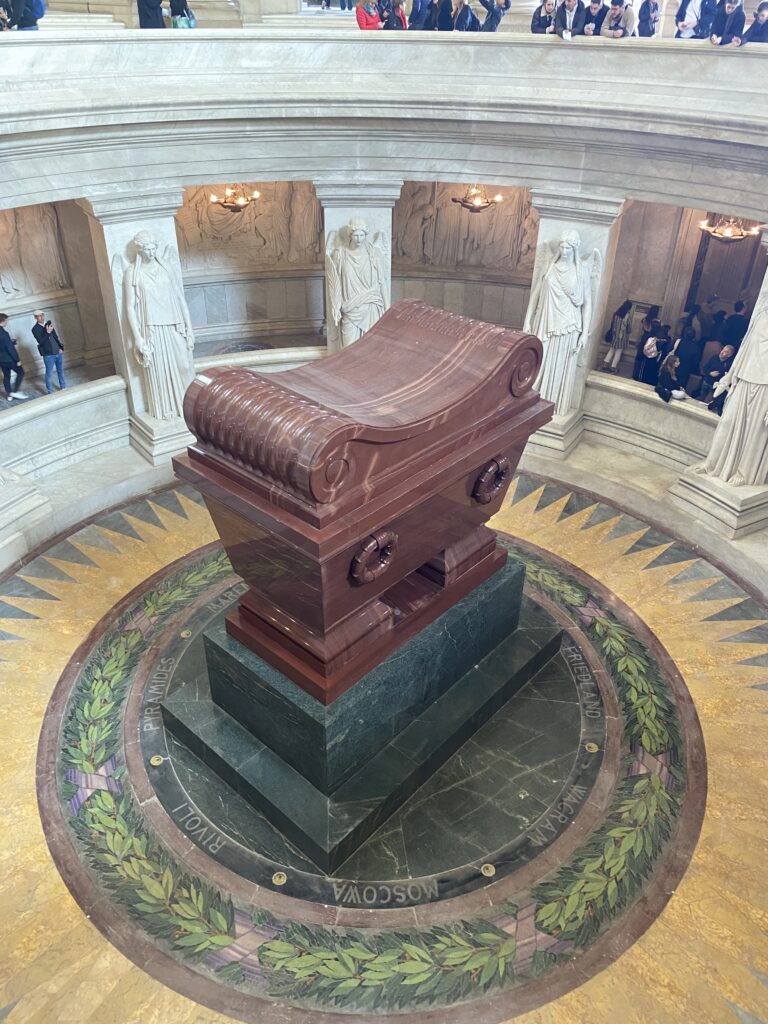
After Les Invalides I walked all around Paris to try to see its many famous monuments. I saw the Eiffel Tower, the Arc de Triomphe and Notre Dame. I did not know that the Arc de Triomphe is also the location of France’s Tomb of the Unknown Soldier, and it honestly made me feel a little guilty. For something that is supposed to be a memorial, I feel like many people weren’t acknowledging it as such.
The next day I took a trip just outside of Paris to the Palace of Versailles. This has always been a top destination for me. Versailles looks like any other European palace, but that’s because it defined what a European palace looked like. At a size of 63,152 m2 it is by far one of the largest palaces in the world (Palace of Versailles, n.d.).
What I thought was fascinating about the palace, aside from its grandeur, was how much it glorified Louis XIV. Known as the “Sun King,” he commissioned the palace to be his royal estate, and also a show of power to prevent the french nobility from rising up against him.
This shows in the art of the palace. There are tons of sculptures and paintings of Louis scattered throughout, but few of them are “normal.” While some show him in traditional royal attire, a lot of them portray him in classical outfits. Many sculptures show him dressed as a stereotypical Roman leader or commander, even bearing some resemblance to Caesar himself. The sculptures of Greek Gods are all centered on Apollo, the sun god, which is an apt choice for the Sun King.
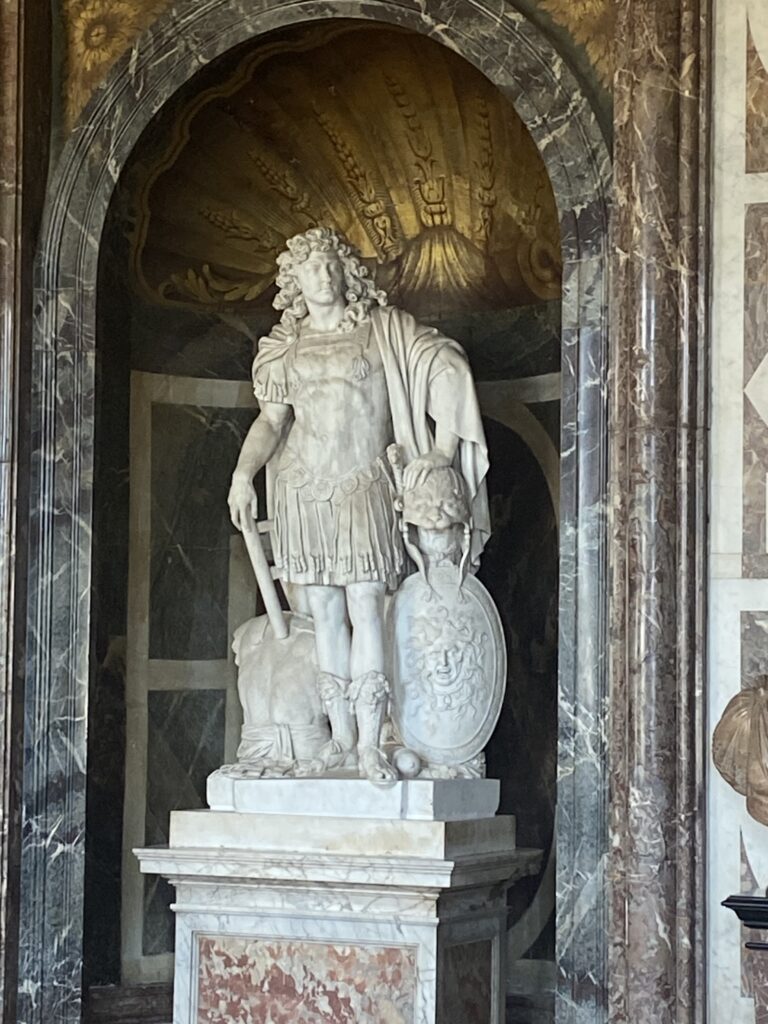
Beneath the sarcophagus you can see a circle of location names. These are a list of some of Napoleon’s greatest victoriesProbably the most intense example of this is the hall of mirrors. The hallway itself is already an insane boast for the time, as mirrors were incredibly expensive, but what fascinated me the most were the painted ceilings. At first glance they seem to portray Greek and Roman myths, or perhaps some religious themes, but when you take a closer look, you notice something strange. The main character in each painting is not Hercules or Caesar or Jesus…
It’s Louis.
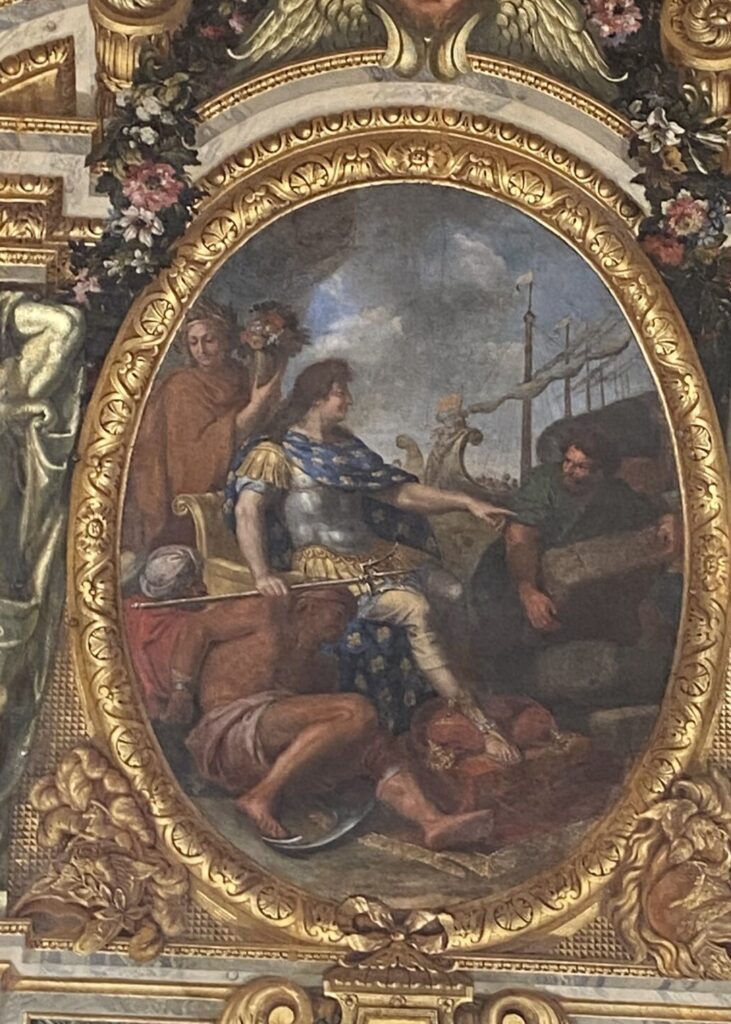
Every.
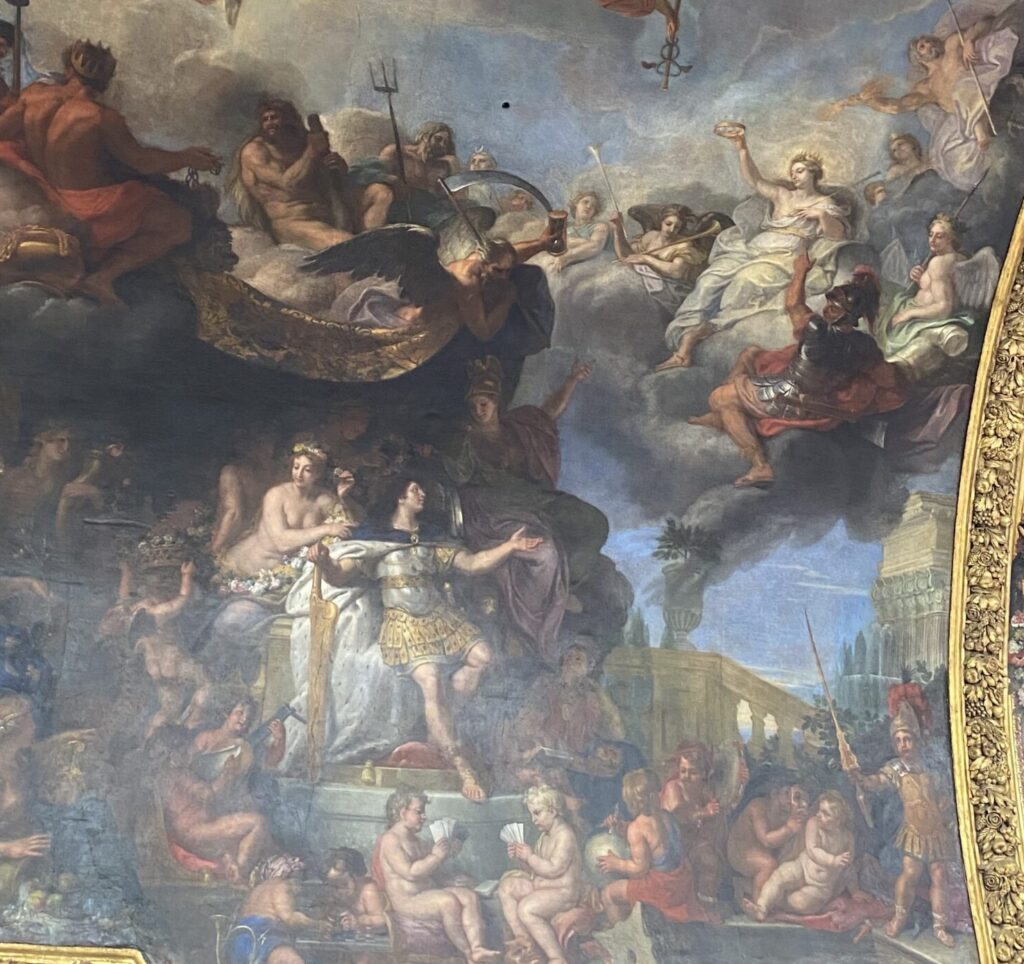
Single.
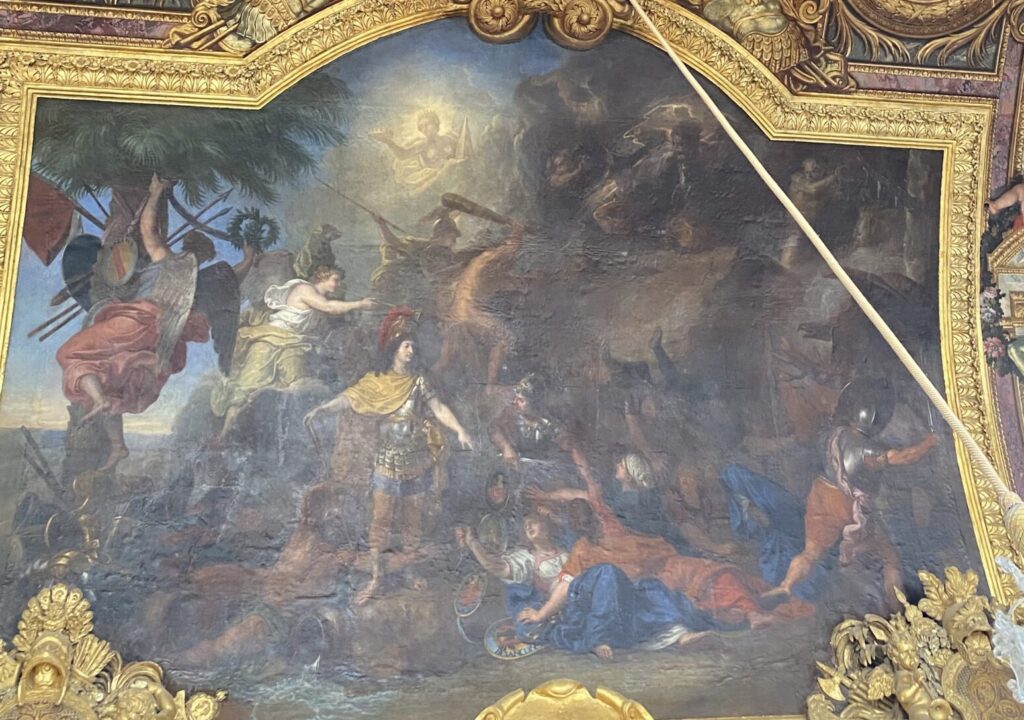
Time.

The hall of mirrors wasn’t just a display of wealth, it was a metaphor for Louis’s power. The absolute of absolute monarchs. Louis XIV wasn’t like a Roman Emperor or like a Greek God. He was an emperor and was a god. He believed that he was chosen to lead France by divine right, and he made sure that everyone who visited Versailles knew this. As one of the strongest monarchs of all time, he had complete control over France. Louis XIV’s consolidation of power would not last long though, as his grandchild, Louis XVI, would be overthrown and beheaded during the French Revolution around a century later, and Versailles would remain empty. Not even Napoleon, who actually declared himself emperor, would be able to move into Versailles without inciting the revolutionary crowds.
I did a lot in Paris, but the themes of absolutism from Napoleon and, more importantly, Louis XIV fascinated me the most.
– Robin
Palace of Versailles. (n.d.). The Palace. Retrieved April 22, 2025, from https://en.chateauversailles.fr/discover/estate/palace
